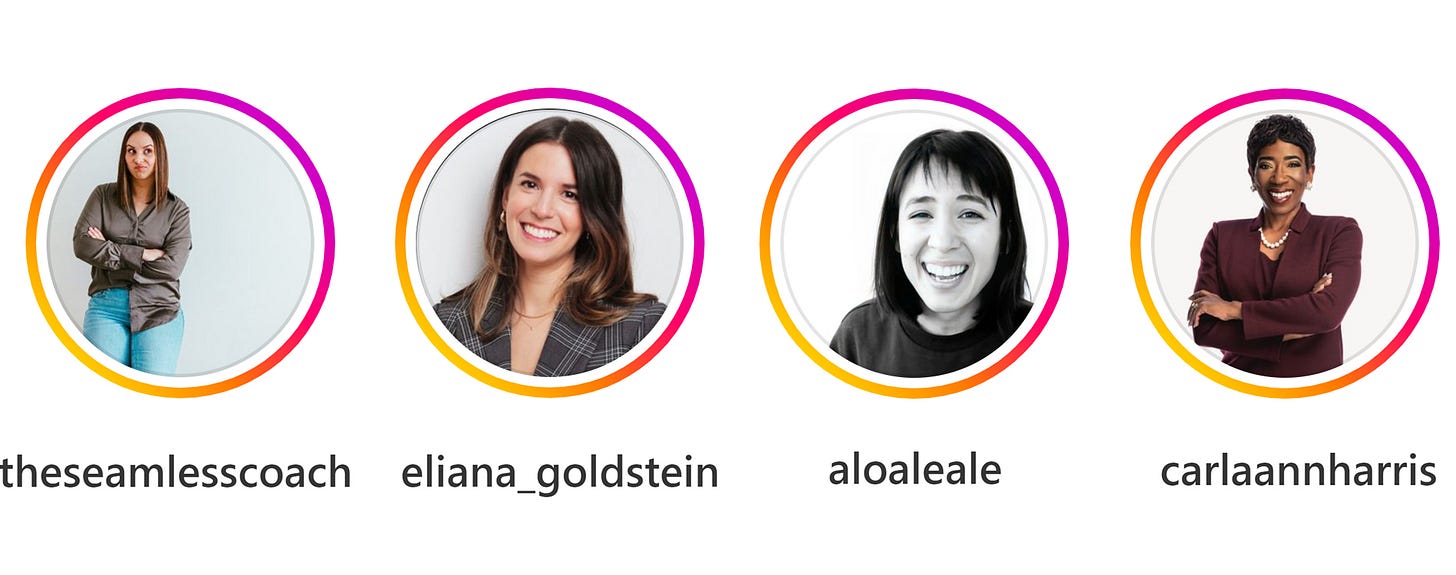If it hasn’t happened yet, it will soon. Your manager leans chummily over your cubicle divider and says, “Reels sure are popular among the GenZs.” You purse your lips, considering this fresh idea.
“Now that you mention it,” you say, nodding slowly, “the younger set do seem to take to video.”
Later that day, you get a text from your manager: “You should make a viral reel for our company.”
Reader Poll: how accurate is this stock art to your experience of getting social media suggestions from your supervisor?
a. Deadass
b. Uncanny Valley
c. Bet
d. Snopes
The basic insight in your manager’s request is sound, even if she doesn’t understand virality. Organizations do have to tell their stories in fresh ways and on new platforms.
But it’s not great that your boss assumes that you, as a Certifiable Young Person, somehow just know how to grok new digital platforms. Gen Zs shouldn’t be treated like a company’s Geek Squad. Plus, even Certifiably Seasoned Persons like me can translate old content onto a new platform—as I’ve found over the last couple of weeks, recording Mode/Switch reels.
But it does take some serious cognitive load. So, here are a few things I’ve been picking up along the way to content creation on a new platform:
You Gotta Smart the algorithms.
Meghan O’Gieblyn’s God Human Animal Machine says that we talk about algorithms as if they’re the unknown god. (Her book is amazing, by the way. Run, don’t walk, to check it out.) But, look, you can learn to collaborate with algorithms without praying to them. Keywords, engaging visuals, consistent posting, and shrewd hashtags will help you work in tandem with algorithms.
For example, I noticed that the Mode/Switch’s amazing marketing guru person used a lot of hashtags for last week’s reel, including: #latecapitalismthings #burnout #idontwanttowork #noonewantstowork. (We like to keep to the sunny side of the street at the Mode/Switch, folks.) Nobody was obsessing about whether 5 or 7 hashtags is the perfect number. (TrackMaven commends the former; SocialFresh the latter.) But thinking about your hashtags is worthwhile cognitive work. So is thinking about your new platform’s algorithms in general: doing so can help you optimize, target, and personalize your company’s messaging.
Change your Style, Not Your Ethos
Every digital platform asks you to adopt a fairly particular style. Substack, e.g., has specific stylistic tendencies (thoughtful, say, but off-the-cuff) that are different from a blog post at an Atlantic newsletter site (which sounds, I dunno, academic lite) or a Twitter rant (which sounds Musky these days) or a LinkedIn flex (“So pleased to announce that I’ve been hired at….”)
But style is not the same thing as ethos. Think of ethos as your consistent stance, your basic attitude, towards all the things. (Style is gesture; ethos is posture. Thank you, Andy Crouch.)
Styles change with the platform. Your ethos shouldn’t.
Personally, I have a tricky time with the style of an Instagram video: blunt, wry, personal, brief. I’m a researcher, ya’all, and researchers have a hard time doing anything in 60 seconds.
But keeping an authentic ethos—consistent with my posture elsewhere on media and in person—has also proved a challenge. I’ve found it’s helpful to keep an analogy in mind. Here’s mine. A couple of summers back, my family hired a guide to take us whitewater rafting on the Colorado River. He was relaxed, attentive, curious, knowledgeable. As a researcher, talking with rising professionals across various digital platforms, I’m aspiring to be the guy on the back the raft, eyes on the rapids, but glad to shout encouragement all the same.
Photo credit, Jackalope West
Keep the What and the How Close
Richard Lanham’s book The Economics of Attention is a work I turn to a lot when I’m trying to understand today’s attention economy. Here’s a maxim I trace to him: communication should connect its through and its at. What the heck? Think of your through as the What of your transparent content. The point, don’t you know. The reader looks through the post or reel or tweet and hopefully gets the point more or less immediately.
Think of the at as the vibe of your communication, often working by indirectness, suggestion, and irony. The reader goes with this element of your posting. It’s the How of what you’re trying to say.
But here’s the thing: these binaries are blurry. In fact, you can’t usually have transparency without some kind of vibe, any more than you can have vibe without some kind of point. Your What is always flip-flopping with your How, Lanham points out. For example, even if your reel focuses strategically on content, your work will inevitably take on some kind of aesthetic (perhaps a lean minimalism). On the other hand, if your blog post focuses on aesthetics, seemingly to the exclusion of any direct meaning, that aesthetic will itself communicate a point. Your aesthetic choices will become your message.
Let me quickly add that it’s important to think about What and the How, not only for the sake of strategic effectiveness, but also for the sake of a larger, moral concern that we might refer to simply as wisdom. Today’s attention economy presents a lot of temptations to make things crudely simple by ignoring either the What or the How. Your job might be easier if you did that, but your communications would be less wise.
Measure What Matters to Your Org
Gauging the success of your messaging on the new platform can be super confusing, because every platform has its own metrics. So, when your boss says, “Let’s try Instagram reels,” make sure to clarify why. What’s the strategic goal? Increased website traffic? Hella sales? Generous engagement? And then measure for that.
Measuring what matters can keep you from falling into short-term thinking. Social media prey on reactivity. So keep an eye, not only on immediate trends, but also broader patterns. Watch out for the addiction to immediate results, and stay close to your organizational mission.
Photo credit, Edward Howell
So there you go. Four cues to keep in mind as you respond to your boss’s latest idea for socials. For my part, I’ve enjoyed the challenge of translating the ideas of this newsletter into a new format. I used to think reels might be out of reach for me. But after a few weeks of trying them out, I think differently. Digital translation to a new platform may not offer virality, but it can afford vitality.
-craig
Who to Learn More From….
(Thanks to Mode/Switch subscriber Andrea Munday for suggesting these.)
Kelsea Warren: Quitting is not the only option
Eliana Goldstein: Career advice - This will change how you think about your career
Alexandra Martinez: Boomers wathcing millennials switch jobs every 2 years
Carlaan Harris: Dealing with a micromanager








